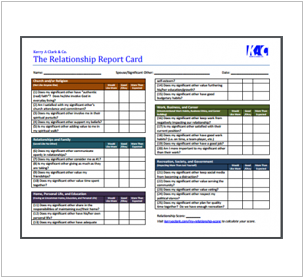The Line-Leader Principle
The Habits That Form Leaders – Part 2.2
A leader who is not in place (or a person who is unable to see themselves as a leader) is not only impacting their destiny but also the destiny of others. Consider that some individuals in your group will not reach their destiny or destinations because, as their leader, you are not in place.
Now, let’s talk about what it looks like when the line leader guides everyone down the hall. I recall walking in a single-file line during my school days. The line leader’s job was to ensure that every person in the class had the opportunity to use the restroom. This process needed to be orderly and provide structure so that no one gets hurt and everyone has the chance to go. Additionally, the line leader’s responsibility didn’t conclude until everyone returned to class promptly.

1) Leaders have to enforce order.
The role of the line leader is crucial once everyone is gathered. Each person should have an opportunity to participate and proceed together as a group. The line leader’s responsibilities include monitoring the line to ensure it remains organized. Order in everything is essential. The line leader’s role is to manage the flow effectively; if five people enter, five should exit. When two individuals exit, it’s appropriate to allow two more to enter. Maintaining this balance helps the line leader keep everyone on task and ensures a smooth process. As a leader, one must know how to maintain the appropriate balance in the workflow, which is where rules apply.
There’s an order to everything. There is no place on Earth where you do not have to respect the order of things. Even when you’re at the beach, there’s an order to how it works. There are guidelines and some unspoken rules. Obviously, you can’t take the tent of the person next to you. As a line leader, you have to make sure no one is breaking the line. You have to make sure no one else from another class ends up in your class’s line and that everyone who belongs with you remains with you. A line leader has to ensure that the class remains quiet while in the halls. Every leader must know and enforce the rules, guidelines, and boundaries that come with achieving the team’s goal.
2) Leaders must be aware of the consequences.
When you’re not a good leader, the consequences can be significant. As a bad line leader, you might inadvertently leave someone behind, skip people, or not give everyone enough time—especially since the goal is to reach the end so that everyone has a chance to use the restroom. We have become far too accustomed to tolerating poor leaders that we’ve become okay with living with the consequences of such poor leadership.
It’s worth noting that line leaders may not always be popular, as people often prefer to do what they want. In other words, a next-level leader may not receive upfront acceptance or praise. Most leaders are initially unliked because discipline is an uncommon skill, as it requires us to do things we don’t want to do but desperately need to do. That is the role of a leader: to instill the appropriate discipline required to achieve our objectives. Have you ever attempted to get someone to do what they didn’t want to do so that they could become more than they were currently being? Only once the goals are achieved will a leader be loved by those who follow them.
3) Leaders establish guidelines and operate within boundaries.
As a leader, it’s essential to establish guidelines and boundaries that define how we operate. We need to understand the parameters within which we’re working. For example, when waiting in line, we should be organized, with only a few people allowed in the restroom at any given time, as the facilities can only accommodate a limited number of individuals. A good leader ensures that order is maintained, allowing us to make progress toward our goals. To do so, a next-level leader must know what resources are available, when to utilize them, and how to do so efficiently and on time. These boundaries help you do the things you want and need to do while preventing you from engaging in activities you don’t want or need to do.
All leaders have boundaries and rules they must follow, especially when people are involved. You can’t just do it your way. You’ve to be willing to put in all the effort necessary to reach and achieve your goal.
When you think about leadership, think about what it takes to be a good line leader. How can I ensure that everyone on my team—whether they are my class, my students, my colleagues, or anyone I am leading—works together and going in the same direction to achieve our established goals? It’s your job as a leader to ensure that they arrive in an orderly fashion, within the boundaries, and reach the destination successfully.
The line leader’s responsibility is to ensure that we achieve our objective and get back to class safely and completely. 100% of the class must make it back. Keep in mind that as a good leader, the line leader must execute the task while someone monitors the leader’s progress. Everyone is accountable to someone, and the line leader has a person to whom they report. This means the leader’s performance is evaluated: Is this a good line leader? Did they do their job well? Will we consider using them as a line leader again, or will we avoid it because they want to do things their own way?
Just like the team, the leader has boundaries. Consider that some individuals in your group will only reach their destiny or destinations because, as their leader, you are in place. Become a next-level leader by being the best line leader.


